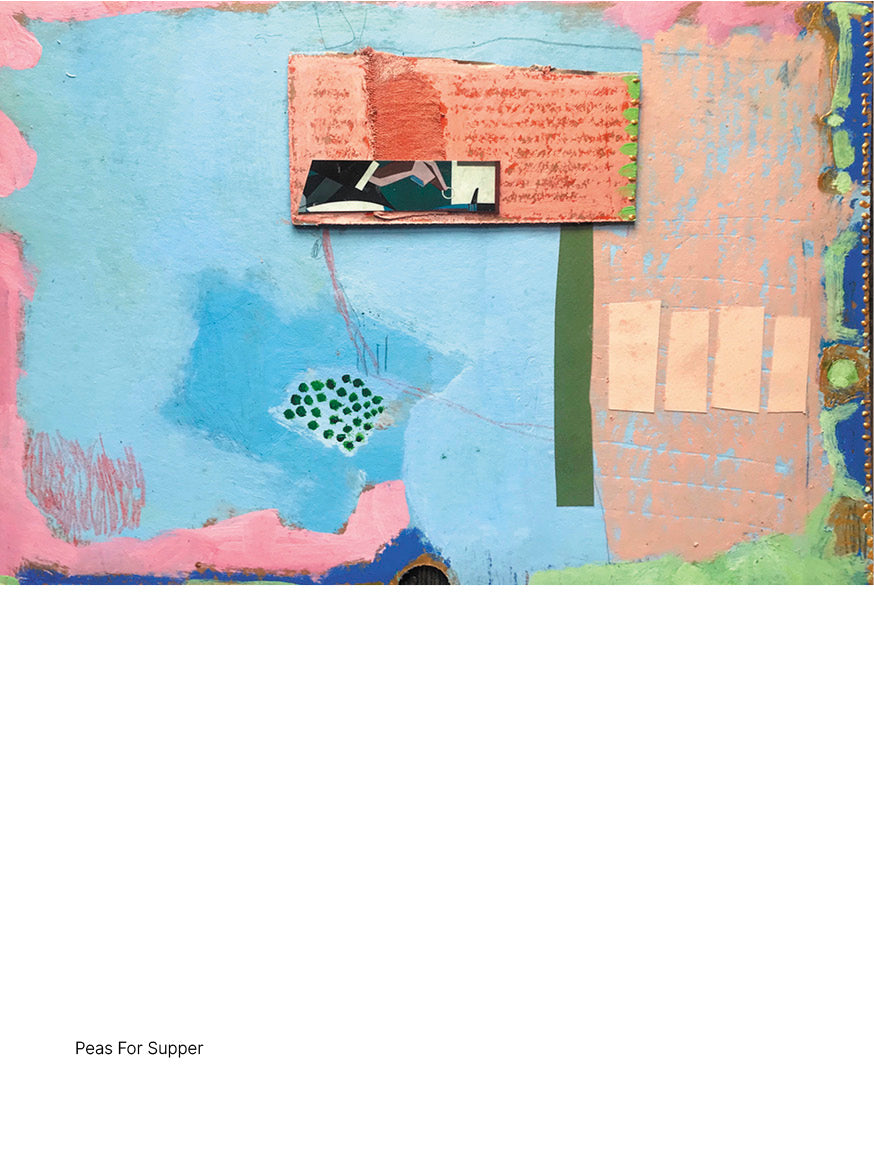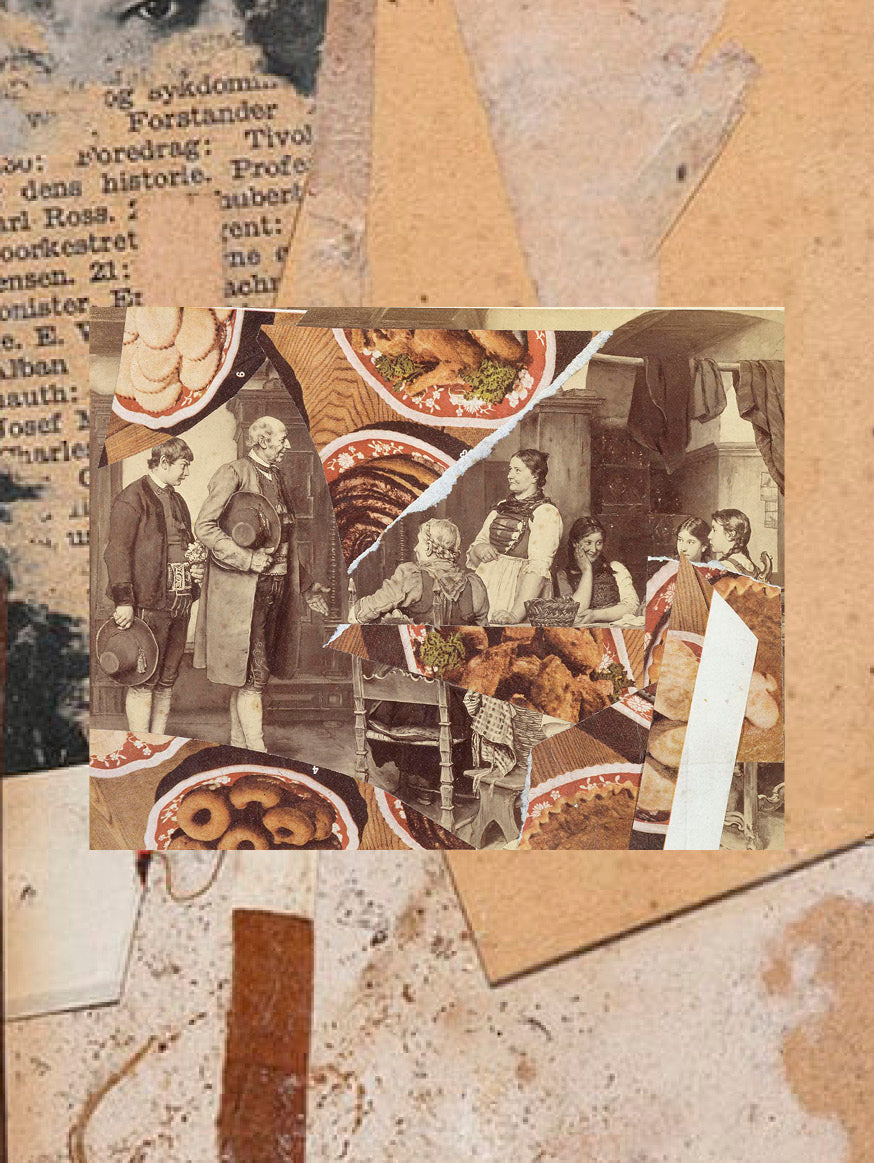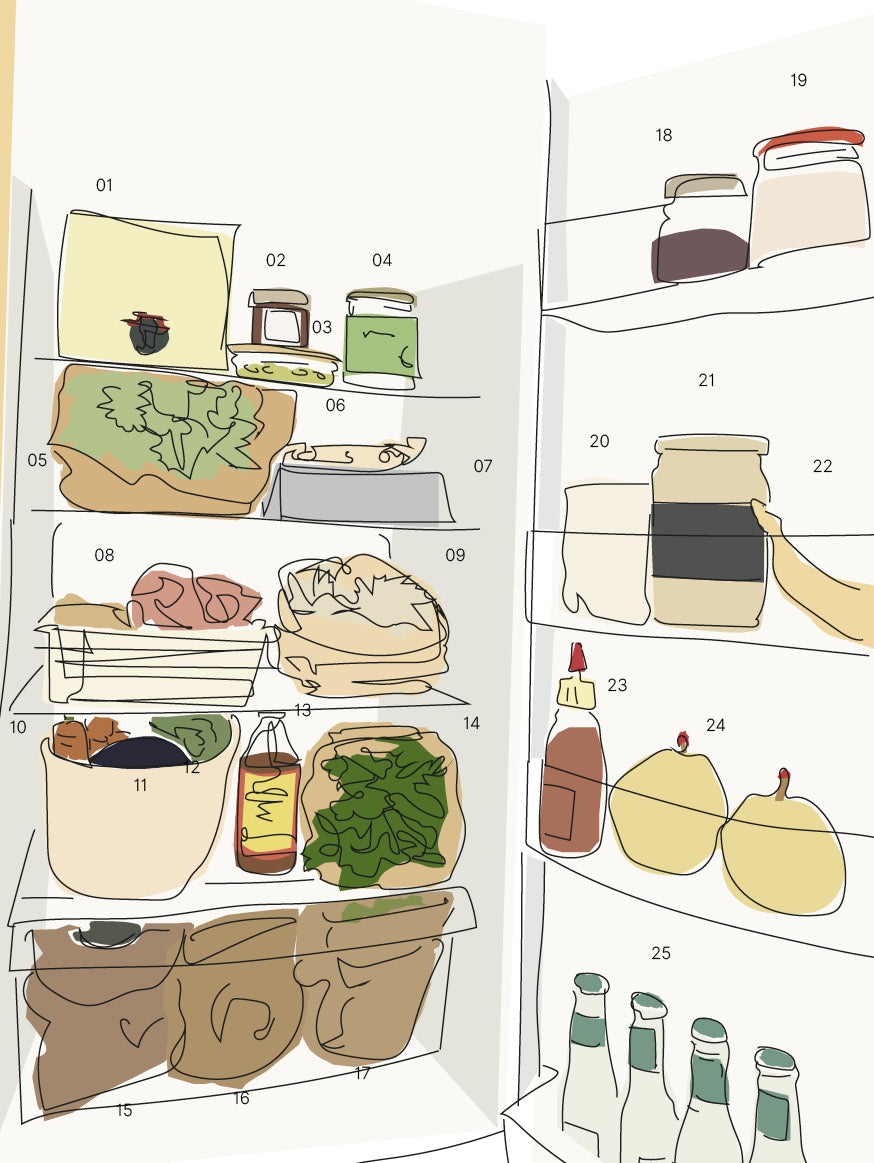03 Pamphlet - Staged Arrangements
Molly van Amerongen

Molly van Amerongen is a Mexico-based artist working predominantly in painting and collage.
She completed her BA Hons in Fine Art at Newcastle University in 2015. She now works between her studio and as a freelance set designer.
In her work she explores memories of places and people, creating abstract narratives for her characters to inhabit, telling stories through color. Her interest lies equally in objects and in the spaces between, domestic and exotic, and her collages use elements of photography along with drawing, paint, and print.
instagram.com/mollyvanamerongenstudio

Hi Molly, could you tell me a bit about your background?
I grew up in Ireland and went to school there until I was 18. I then moved to England and completed a B.A. (Hons) in Fine Art at Newcastle University, in 2015. Since then I have been living in London. I divide my time between my studio and as a freelance specialist painter and set designer. I have had two solo shows in London and plan to have another more considered show at the end of the year, with some larger-scale works that I plan to start making in Mexico.
I see you recently moved to Mexico. What brought you there?
I came to Mexico City to start making some new work, find a studio, learn Spanish and – in between – to travel the country. It has a really wonderful art scene, vibrant and above all diverse and inviting. I have only been here for a few weeks but already I can see that it is such an exciting place for young artists. As a country, Mexico is so visually intense, so stimulating and wild. I have already spent a lot of time in India, and I think it’s a good idea to replenish my sight every so often, to cleanse the doors of perception, which London (like any sophisticated European city) tends to close rather than open.
What is the first memory you have about yourself creating art?
My mother has been at various times a graphic designer and is extremely creative. I have early memories of her sitting at the kitchen table, making my sister and I elaborate fancy dress costumes for birthday parties. She would spend hours creating the most marvelous outfits. We grew up in rural Ireland and she used to run children’s art camps in the summer which were completely wonderful. We would have art and craft classes along with drama and music. We used to make things like wire chandeliers and sequin papier-mâché shoes. The memories are still so vivid. She has definitely been a huge influence on why I am making art today.
You create spaces in your work, both physically with set design and abstract ones through your art. Where do these places come from?
They come from a mixture of memory and imagination. I use photography in my work which sparks a recollection of things seen, which in turn allows the imagination to create a space which has not yet been seen. I love to travel (India again) which is why color is so all-important for me. Colour can tell a story and bring you back to a particular place. And it can create new continents, full of detail.
My interest lies equally in the domestic and the exotic: in objects and in the spaces between them.
And who are the characters you want to inhabit your space?
Titles are important to me, especially when I am making the collages. Often I do not have a character in mind until I finish, and suddenly it materializes inside the work. I think the title helps the viewer to visualize a character too, or to think in such terms. I feel no need to insist upon character or story: if the character appears, fine, but space is more important – the space as a character.
This Issue is about arrangements. Staged and/or accidental. I see your work is based a lot on arranging too. Do you personally like to arrange things or do you have any kind of collection you keep? When I was little I used to have hundreds of coloring pencils which I would spend hours arranging into different families. But I am not a collector by inclination. In my work, I place things by allowing them to find their places. I don’t think the arrangements have to do with order – more to do with what is called an accident.
Does collaging work as a kind of ritual/therapy for you?
Yes, I think it probably does help. I find that arranging the elements of an image, putting the image together, is extremely therapeutic. When an arrangement works there is nothing more satisfying. It can be a slow process or it can happen very quickly and as if without thinking.
Suggest your favorite three (not so famous) museums/art collections.
So difficult to choose but here are three of my favorite places I’ve been recently:
- Casa Luis Barragán, Mexico City
- Dia Beacon, New York
- Donald Judd House, New York


